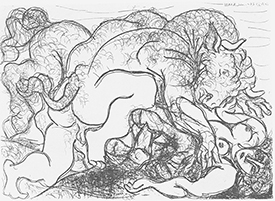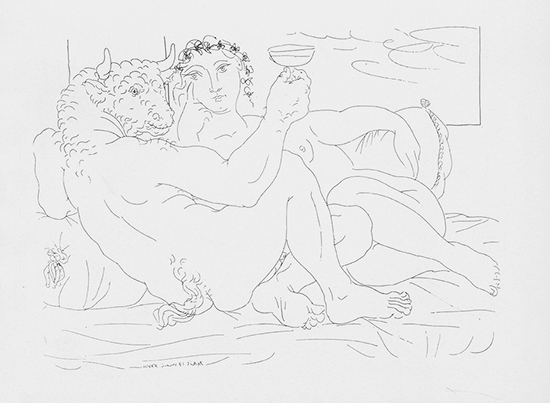The consoling, tranquil, Apollonian celebration of Marie-Thérèse’s return to health, as depicted in the The Sculptor’s Studio etchings, transition to a Dionysian register in the 11 Minotaur etchings produced between mid-May and mid-June 1933. The latter works represent a fully recovered muse because they predominantly display Dionysian debauchery in the form of unfettered sexual desire and gratification. The series begins on a celebratory note that depicts the minotaur drinking a toast to his beloved muse indicating her full return to health (Fig.28). However, this remnant of Apollonian tranquillity rapidly morphs into lustful passion as the once benign sculptor joins the lecherous minotaur in an orgiastic drinking session (Fig. 29). The minotaur then goes on to pay the ultimate price for his sexual transgressions when he is ignominiously stabbed to death in a bullring by a youthful assailant, while, in a dream-like manner, multiple depictions of Marie-Thérèse are transfixed by this bloody encounter (Figs. 30-31). In autobiographical terms the minotaur’s excesses could be understood as a myth-like articulation of Picasso’s pent-up desire during the course of waiting for his muse to fully recover.
 30
30 28
28